Ladakh, often referred to as the “Land of Lamas,” is a region where spirituality is deeply embedded in the fabric of its culture. Famous monasteries in Ladakh are the epitome of Buddhist philosophy. Every monastery is a door to old traditions excellent architecture and breathtaking sceneries of the Himalayas. This blog walks you through the top 15 monasteries that everybody should visit while in Ladakh. Each of them has its own history, and even today stands strong as centres of learning, spirituality, and culture.
Top 15 Famous Monasteries In Ladakh
Here is a list of the top 15 famous monasteries in Ladakh which offer Buddhist retreats, and spiritual, cultural, and architectural significance.
1. Hemis Monastery
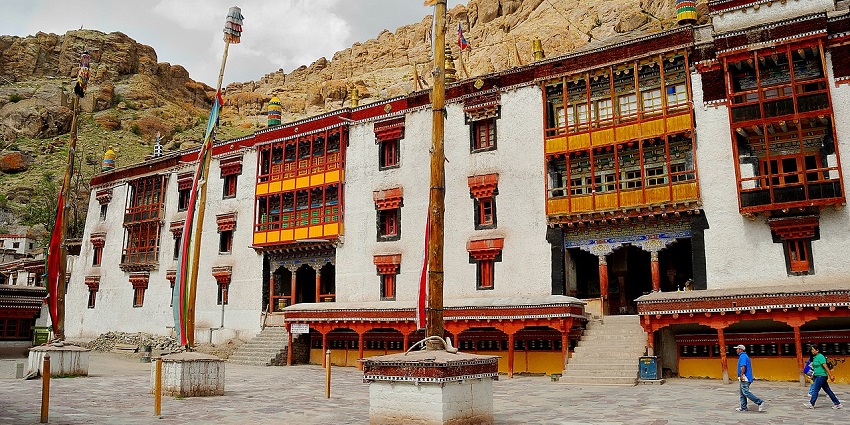
Photo: Shashank Mehendale / Wikimedia Commons
Hemis Monastery, established in the 17th century, is the largest and most famous in Ladakh. Known for its grand annual Hemis Festival in June, this festival honours Guru Padmasambhava with vibrant mask dances and spiritual rituals. The monastery is a treasure trove of ancient relics, including a large golden Buddha statue, thangkas, and other artefacts. Its secluded location within the Hemis National Park offers a serene retreat for visitors. The monastery is also a key centre for the Drukpa lineage of Tibetan Buddhism, making it an important spiritual site in the region.
Location: Leh, Ladakh
Best Time To Visit: June to September
Entry Fees: ₹50
Timings: 8 AM – 1 PM, 2 PM – 6 PM
Suggested Read: Top Places To Visit In Kargil To Explore History And Unveil Adventure
2. Thiksey Monastery
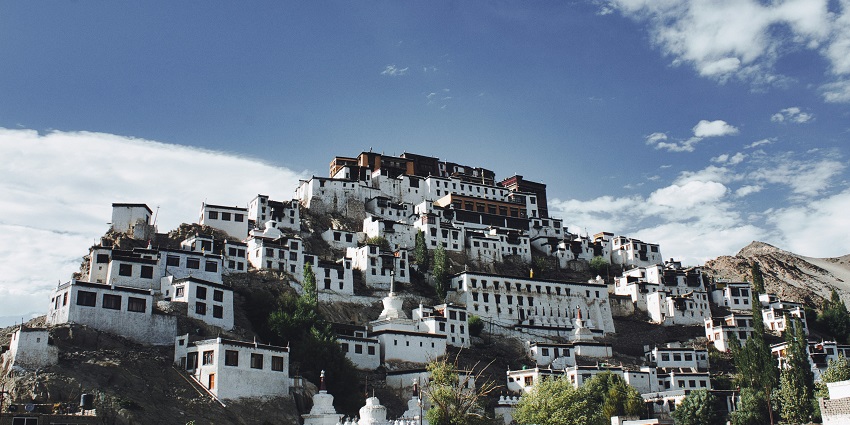
Photo: Ananya Bilimale / Unsplash
Thiksey Monastery, often compared to the Potala Palace in Tibet, is a 12-story complex that houses numerous stupas, statues, and thangkas. Founded in the 15th century, it features the iconic 40-foot-tall Maitreya Buddha statue, which is the largest in Ladakh. The monastery offers a panoramic view of the Indus Valley and is known for its morning prayers, where visitors can witness monks chanting in the main prayer hall. The Thiksey Gustor Festival, held in the monastery, draws travellers with its sacred mask dances and traditional ceremonies.
Location: Thiksey, Ladakh 194201
Best Time To Visit: May to October
Entry Fees: ₹30
Timings: 7 AM – 7 PM
3. Diskit Monastery
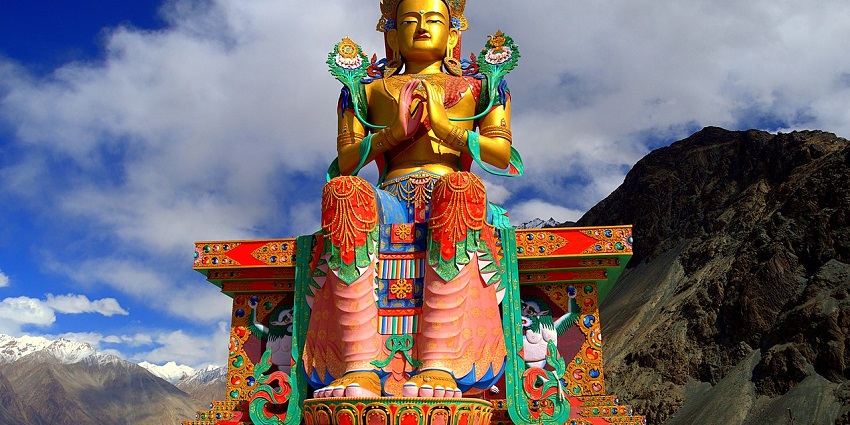
Photo: Pavithrah / Wikimedia Commons
Diskit Monastery is the oldest and largest in the Nubra Valley, founded in the 14th century. It is home to a stunning 106-foot statue of Maitreya Buddha that overlooks the valley, offering breathtaking views of the surrounding sand dunes and mountains. The monastery belongs to the Gelugpa sect of Tibetan Buddhism and is known for its tranquil ambience. Visitors can attend the Dosmoche Festival, a celebration filled with colourful mask dances and rituals to ward off evil. Diskit’s serene environment and spiritual significance make it a must-visit in Nubra Valley.
Location: Diskit, Jammu and Kashmir 194401
Best Time To Visit: May to September
Entry Fees: ₹30
Timings: 7 AM – 1 PM, 2 PM – 7 PM
Suggested Read: Places To Visit In Ladakh
4. Alchi Monastery
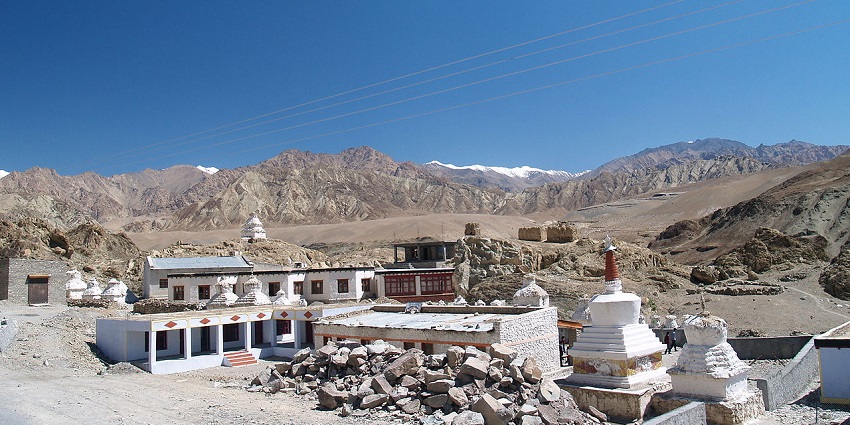
Photo: Steve Hicks / Wikimedia Commons
Alchi Monastery, dating back to the 11th century, is one of the oldest and most famous monasteries in Ladakh. Unlike most Ladakhi monasteries perched on hillsides, Alchi is situated on flat land, alongside the Indus River. It is famous for its exquisite wall paintings, wood carvings, and ancient statues, which reflect a unique blend of Indo-Tibetan art. The monastery complex consists of several temples, each housing intricately painted murals that have survived for centuries. Alchi is a spiritual and artistic hub, making it a gem for art lovers and history enthusiasts alike.
Location: Alchi, Ladakh 194106
Best Time To Visit: May to September
Entry Fees: ₹25 for Indians, ₹50 for foreigners
Timings: 10 AM – 1 PM, 2 PM – 6 PM
5. Shey Monastery
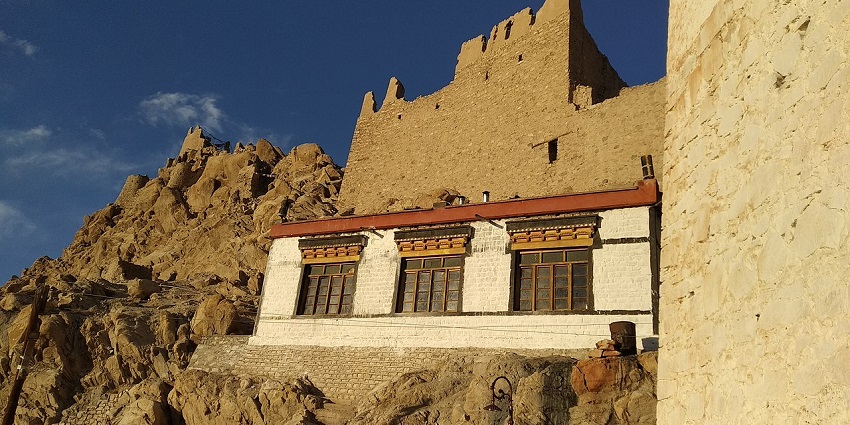
Photo: Kmohankar / Wikimedia Commons
Shey Monastery, located just 15 km from Leh, was once the summer capital of Ladakh. Built in the 17th century, it is renowned for its massive 39-foot-tall statue of Shakyamuni Buddha, made of copper and gold. The monastery offers panoramic views of the surrounding valley and mountains. Shey Palace, adjacent to the monastery, adds historical significance to the site. The Shey Doo Lhoo Festival, held annually, is a vibrant celebration of Ladakhi culture and religion. With its historical and spiritual value, Shey Monastery remains a key site for pilgrims and visitors alike.
Location: Leh Manali Highway, near Shey Palace, Shey, Ladakh 194201
Best Time To Visit: May to October
Entry Fees: ₹30
Timings: 6 AM – 1 PM, 1:30 PM – 6 PM
Suggested Read: Places To Visit In Leh For A Refreshing Retreat In Nature’s Lap
6. Stakna Monastery
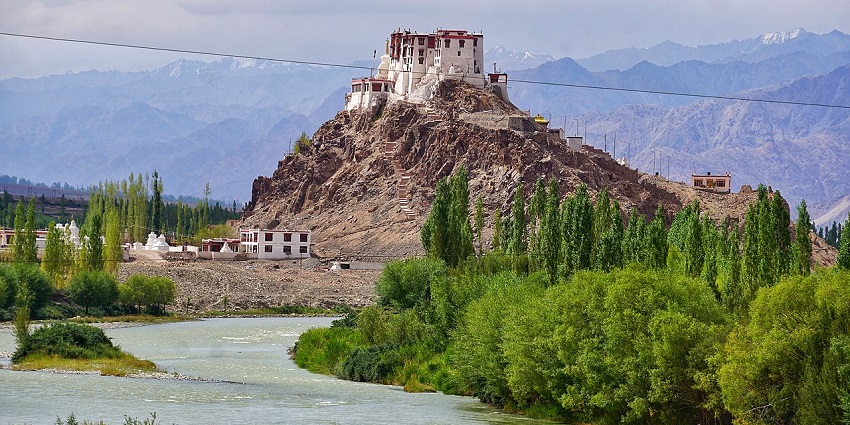
Photo: Deepank Ranka / Wikimedia Commons
Stakna Monastery, perched atop a hill shaped like a tiger’s nose, offers stunning views of the Indus River and surrounding mountains. Founded in the 16th century by a Bhutanese lama, this monastery is known for its peaceful atmosphere and beautiful murals. The monastery belongs to the Drukpa sect of Tibetan Buddhism and houses a collection of ancient Buddhist texts and statues. The quiet environment and scenic location make Stakna an ideal retreat for those seeking spiritual reflection or a serene escape from the busier areas of Ladakh.
Location: Stakna, 194201
Best Time To Visit: May to October
Entry Fees: ₹30
Timings: 7 AM – 6 PM
7. Takthok Monastery
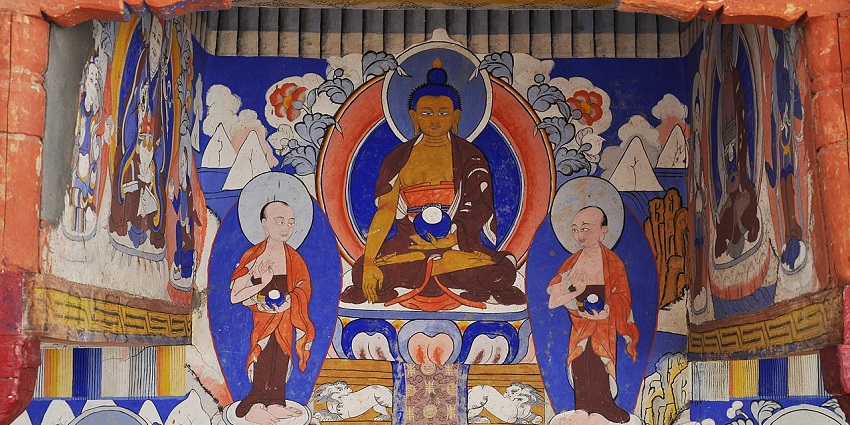
Photo: Prof Ranga Sai / Wikimedia Commons / Image For Representation Only
Takthok Monastery is unique in Ladakh as it is built around a series of caves. It is the only Nyingma monastery in the region, founded in the 17th century by Guru Padmasambhava. The monastery’s name, meaning “rock roof,” reflects its rock-cut architecture, which adds to its spiritual allure. The inner sanctum of the monastery is a cave where Guru Padmasambhava is believed to have meditated. Takthok hosts an annual festival where traditional Cham dances are performed. Its mystical ambience and unique setting make it a fascinating stop for visitors to Ladakh.
Location: Shakti Village, Sakti, 194201
Best Time To Visit: June to September
Entry Fees: ₹30
Timings: 6 AM – 1 PM, 1:30 PM – 6 PM
Suggested Read: Enhance Your Vacation With These Things To Do In Ladakh
8. Matho Monastery
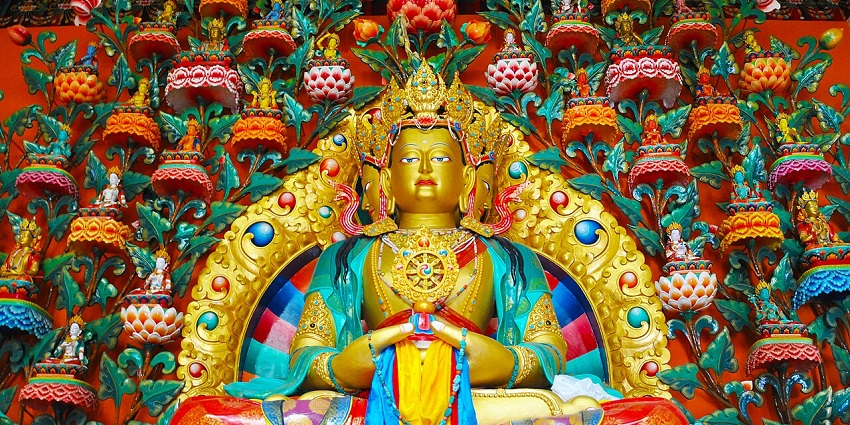
Photo: Prof Ranga Sai / Wikimedia Commons
Matho Monastery, located 26 km from Leh, is the only Sakya sect monastery in Ladakh. Founded in the 15th century, it is famous for its annual Matho Nagrang Festival, where local oracles perform sacred rituals and make predictions for the coming year. The monastery houses a rich collection of ancient thangkas and Buddhist artefacts. Matho’s remote location, coupled with its cultural and spiritual significance, provides a peaceful environment for meditation. Its annual festival, filled with vibrant colors and spiritual fervor, attracts many visitors eager to witness this unique tradition.
Location: Leh,Ladakh
Best Time To Visit: May to September
Entry Fees: ₹30
Timings: 7 AM – 6 PM
9. Kursha Monastery
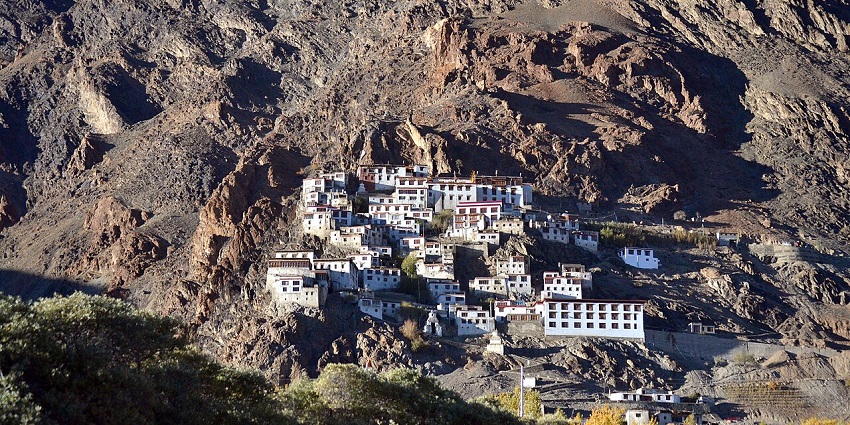
Photo: Sammandi / Wikimedia Commons
Kursha Monastery is the largest in Zanskar Valley, founded in the 11th century by the Gelugpa sect. It is known for its stunning wall paintings and thangkas depicting the life of Buddha. The monastery’s remote location in the Zanskar Valley, near the Doda River, offers a peaceful retreat for spiritual practitioners and visitors alike. The annual Gustor Festival, celebrated with masked dances and rituals, is a major attraction. Kursha’s rich history, combined with its natural beauty, makes it a spiritual and cultural gem in the Zanskar region.
Location: Kurshan, Leh, Ladakh
Best Time To Visit: June to September
Entry Fees: Free
Timings: 7 AM to 7 PM
Suggested Read: Puga Valley In Ladakh
10. Phyang Monastery
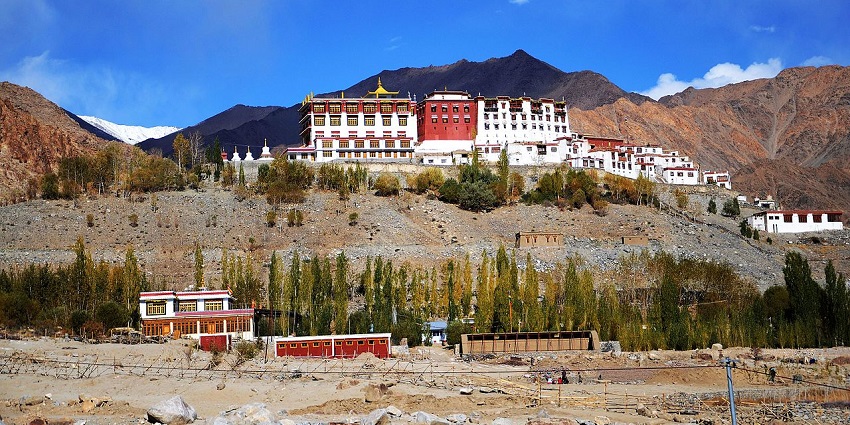
Photo: Darshancg / Wikimedia Commons
Phyang Monastery, located 20 km from Leh, is one of the famous monasteries in Ladakh, founded in 1515 by the Drigungpa sect. It is known for its beautiful murals, ancient manuscripts, and a museum showcasing a vast collection of Tibetan, Mongolian, and Chinese artifacts. Phyang hosts the Gang-Sngon Tsedup Festival, featuring vibrant mask dances and sacred rituals. The monastery’s peaceful setting amidst picturesque landscapes offers a serene environment for meditation and reflection, making it a popular destination for spiritual seekers and tourists.
Location: Fiang 194101
Best Time To Visit: May to October
Entry Fees: ₹50
Timings: 12 AM – 12 PM
11. Namgyal Tsemo Monastery
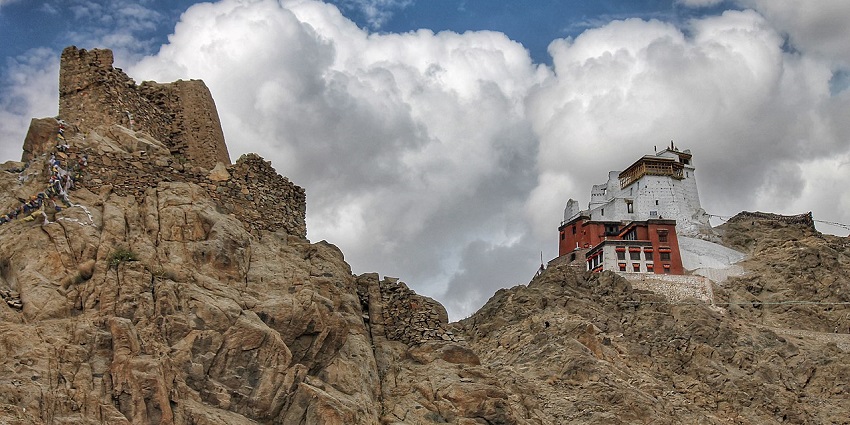
Photo: Wingedtree / Wikimedia Commons
Namgyal Tsemo Monastery, perched high above Leh, was built in 1430 by King Tashi Namgyal. The monastery is famous for its three-story-high statue of Maitreya Buddha, as well as its ancient frescoes and manuscripts. Its elevated location provides panoramic views of Leh, the Indus Valley, and the surrounding mountains. The monastery’s peaceful environment makes it an ideal spot for meditation, offering visitors a serene escape from the hustle of Leh town while still being accessible.
Location: Leh, Ladakh
Best Time To Visit: May to September
Entry Fees: ₹20
Timings: 7 AM – 9 AM, 5 PM – 8 PM
Suggested Read: Adventure Sports In Ladakh – Planning The Ultimate Trip
12. Chemrey Monastery
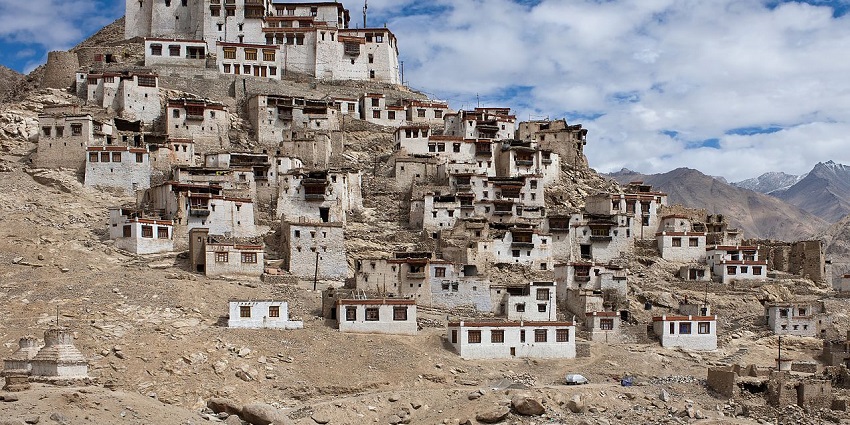
Photo: KennyOMG / Wikimedia Commons
Chemrey Monastery, located about 40 km east of Leh, was founded in the 17th century and is known for its impressive statue of Padmasambhava. The monastery is home to a valuable collection of ancient scriptures, including those with texts written in gold. Chemrey’s remote location offers visitors a tranquil setting for reflection and meditation. The monastery’s annual festival, Chemrey Angchok, is celebrated with colorful Cham dances and sacred rituals. Its peaceful atmosphere and cultural significance make Chemrey a must-visit for those exploring Ladakh’s spiritual heritage.
Location: Chemrey, 194201
Best Time To Visit: June to October
Entry Fees: ₹30
Timings: 6 AM – 6 PM
13. Spituk Monastery
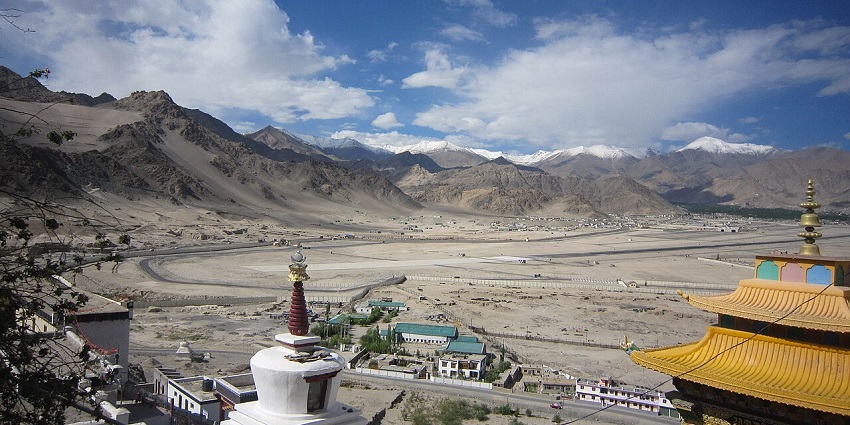
Photo: Adipalande / Wikimedia Commons
Spituk Monastery, situated just 8 km from Leh, is known for its spectacular collection of ancient masks, thangkas, and Buddhist artifacts. Founded in the 11th century, the monastery belongs to the Gelugpa sect of Tibetan Buddhism and is home to around 100 monks. The annual Gustor Festival, featuring sacred dances and rituals, draws many visitors each year. Spituk’s location on a hill offers stunning views of the surrounding landscape, including the nearby Indus River, making it a popular destination for both pilgrims and tourists.
Location: Leh,Ladakh
Best Time To Visit: May to October
Entry Fees: ₹20
Timings: 8 AM – 1 PM
Suggested Read: Trekking In Ladakh Zanskar
14. Bardan Monastery
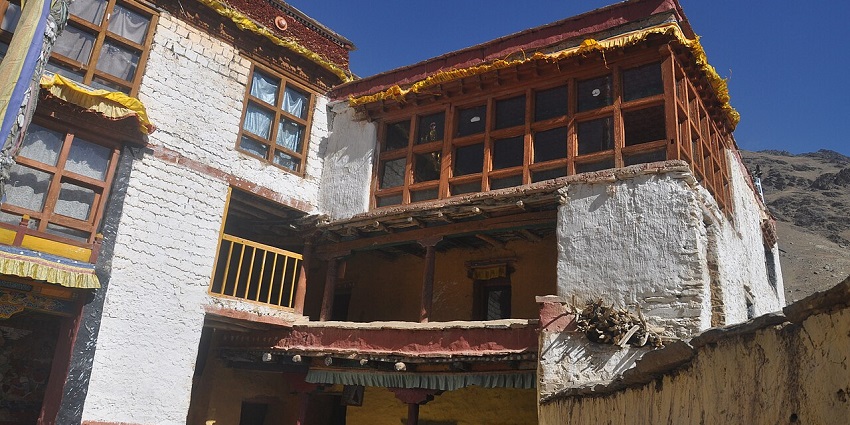
Photo: Prof Ranga Sai / Wikimedia Commons
Bardan Monastery, located in the remote Zanskar Valley, was founded in the 17th century and belongs to the Drukpa sect of Tibetan Buddhism. The monastery is known for its impressive Dukhang assembly hall and several ancient stupas made of clay and bronze. Set on the banks of the Lungnak River, Bardan offers a peaceful retreat for monks and pilgrims. The monastery’s annual festival features Cham dances and sacred rituals, attracting visitors who seek to experience Zanskar’s spiritual traditions in a serene environment.
Location: Padam, Zanskar, Ladakh
Best Time To Visit: June to September
Entry Fees: N/A
Timings: 8 AM – 6 PM
15. Stok Monastery
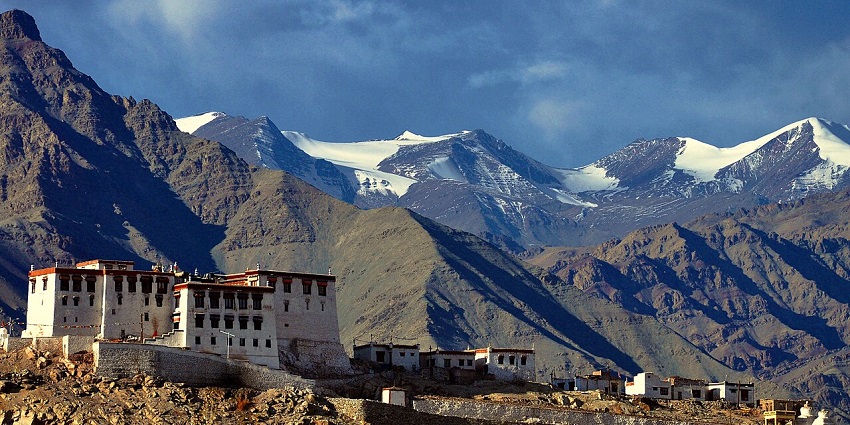
Photo: Prof Ranga Sai / Wikimedia Commons
Stok Monastery, located 15 km south of Leh, was built in the early 19th century and is home to the Ladakhi royal family’s museum. The monastery houses ancient Buddhist artefacts, including statues, thangkas, and manuscripts. It is set against the backdrop of the majestic Stok Kangri Peak, offering visitors stunning views of the surrounding landscape. The monastery’s peaceful environment and cultural significance, combined with the nearby Stok Palace, make it a popular destination for those exploring Ladakh’s rich spiritual and royal heritage.
Location: Stok, Ladakh
Best Time To Visit: May to September
Entry Fees: ₹50
Timings: 7 AM – 6 PM
Suggested Read: Best Food In Leh
Famous monasteries in Ladakh carry a rich legacy, representing different schools of Tibetan Buddhism, intricate artwork, and historical importance. These monasteries are not just places of worship but also centres of learning and cultural preservation. Visiting them allows travellers to witness the serene blend of spirituality and natural beauty that Ladakh is renowned for. Plan a trip with TripXL and learn more about these magical monasteries.
Cover Photo: Vivek Vatsyayn / Unsplash


 WhatsApp
WhatsApp
 Twitter
Twitter









